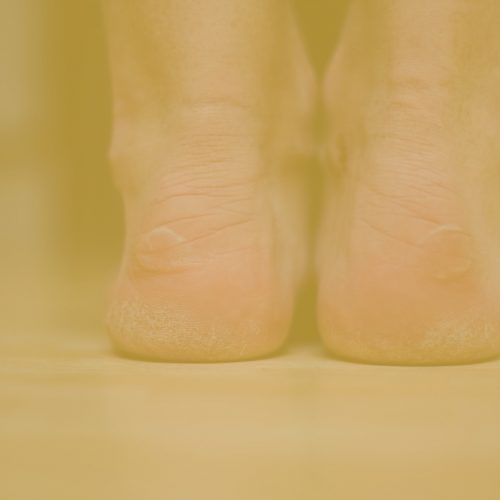Sprains of the ankle are rather frequent injuries, particularly among sportsmen and people who generally lead busy lifestyles. On the other hand, not every sprained ankle is the same. An inversion, an eversion, and a high ankle sprain are the three most common sprains that can occur in the ankle. Let’s investigate each category further and better grasp the contrasts between them.
What Are Ankle Sprains?
An ankle sprain is an injury to one or more ligaments in the ankle, usually on the outside or inside of the joint. Ligaments are strong, elastic bands of tissue that connect bones. They provide stability and strength to the joints, allowing for movement in specific directions. A sprain can occur when these ligaments are stretched beyond their normal range of motion.
Key Points:
- Mechanism of Injury: Ankle sprains often happen when the foot is twisted, turned, or rolled awkwardly. This can be due to misstepping, sudden changes in direction, or external forces like collisions in contact sports.
- Symptoms: Common symptoms of an ankle sprain include pain, swelling, bruising, and limited range of motion. Depending on the severity, some people might also experience instability in the ankle or difficulty walking.
- Diagnosis: A healthcare practitioner will typically diagnose an ankle sprain based on a physical examination and the patient’s description of the injury. In some cases, imaging tests like X-rays or MRIs might be used to rule out fractures or assess the extent of ligament damage.
- Recovery: The recovery time for an ankle sprain varies based on its severity. Mild sprains might heal within a week, while more severe injuries can take several weeks to months. Rehabilitation exercises are crucial to restore strength and flexibility and prevent future injuries.
- Prevention: Proper footwear, strength and balance exercises, and being cautious on uneven terrains can help reduce the risk of ankle sprains. Using protective gear and adhering to proper techniques can also be beneficial in sports.
Understanding the nature and types of ankle sprains is essential for effective treatment and prevention. Whether inversion, eversion, or high ankle sprain, timely intervention and appropriate care can ensure a swift recovery.
Inversion Ankle Sprain
An inversion sprain, often called a lateral ankle sprain, is the most common type of ankle injury. This injury occurs when the ankle rolls outwards, causing the foot to turn inwards. As a result, the ligaments outside the ankle, primarily the anterior talofibular ligament (ATFL) and the calcaneofibular ligament (CFL), are stretched beyond their normal range, leading to a sprain.
Key Points:
- Prevalence: Inversion sprains account for approximately 85% of all ankle sprains. They are especially frequent in sports that involve jumping, rapid direction changes, or running on uneven surfaces, such as basketball, volleyball, and trail running.
- Causes: Apart from sports-related incidents, everyday activities can also lead to inversion sprains. This includes tripping on uneven surfaces, stepping on an object, wearing high heels and losing balance.
- Symptoms: Immediate swelling, bruising, and pain on the outside of the ankle are common indicators. In more severe cases, individuals might hear a popping sound at the time of injury.
- Severity Levels: Inversion sprains can be categorised into three grades based on their severity:
– Grade 1: Mild stretching and microscopic tearing of the ligament fibres. Recovery typically takes 1-2 weeks.
– Grade 2: Partial tearing of the ligament. The ankle joint may become loose. Recovery can take 3-6 weeks.
– Grade 3: Complete tear of the ligament. This is the most severe form and may require surgical intervention. Recovery can take several months.
- Treatment: The R.I.C.E (Rest, Ice, Compression, Elevation) method is an effective first-aid treatment. It’s crucial to consult a healthcare practitioner for persistent pain or severe injuries. In extreme cases, they might recommend physical therapy, bracing, or even surgery.
- Prevention: Strengthening exercises, balance training, and wearing supportive footwear can significantly reduce the risk of inversion sprains. Regular warm-ups before physical activity and being mindful of the terrain can also help prevent this.
Eversion Ankle Sprain
Eversion sprains, also known as medial ankle sprains, are less common than their inversion counterparts. This sprain occurs when the ankle rolls inwards, causing the foot to turn outwards. This action places undue stress on the deltoid ligament, a strong and broad ligament on the inside of the ankle, leading to a sprain.
Key Points:
- Prevalence: Eversion sprains are relatively rare, making up only 10-15% of all ankle sprains. Their occurrence is less frequent because the deltoid ligament is more robust and resilient than the ligaments outside the ankle.
- Causes: Eversion sprains can result from unusual foot placements, such as stepping in a hole, misstepping on a curb, or catching the foot while moving. They can also occur in contact sports when another player steps on the outside of the foot, pushing it inward.
- Symptoms: Pain is typically felt inside the ankle, accompanied by swelling and bruising. The affected area might be tender to touch, and weight-bearing can be painful.
- Severity Levels: Like inversion sprains, eversion sprains can also be categorised into three grades:
– Grade 1: Mild damage with slight stretching and microscopic tearing of the ligament fibres. Recovery usually spans 1-2 weeks.
– Grade 2: Moderate damage with partial ligament tearing, leading to some loss of function. Recovery can range from 3-6 weeks.
– Grade 3: Severe damage with a complete tear of the ligament. This grade often requires more extended rest, potential immobilisation, and sometimes surgical intervention. Recovery can extend to several months.
- Treatment: Immediate care involves the R.I.C.E method. For persistent or severe injuries, consulting a healthcare practitioner is essential. They suggest immobilisation using a brace or cast, physical therapy to restore strength and mobility, or surgery in rare cases.
- Prevention: To prevent eversion sprains, it’s crucial to wear proper footwear that offers good ankle support. Exercising that strengthens the ankle muscles and improves proprioception can also help reduce the risk. Additionally, being cautious on uneven terrains and avoiding sudden, forceful inward movements of the foot can be beneficial.
High Ankle Sprain (Syndesmotic Injury)
High ankle sprains, medically termed syndesmotic injuries, are injuries to the syndesmosis, a fibrous joint connecting the two bones of the lower leg: the tibia and fibula. Unlike the more common inversion and eversion sprains, high ankle sprains affect the ligaments above the ankle joint.
Key Points:
- Prevalence: High ankle sprains are less common than inversion and eversion sprains but are often more debilitating. They account for approximately 15% of all ankle sprains and are frequently seen in contact sports.
- Causes: This sprain typically occurs when the foot is planted on the ground and a strong external rotational force is applied. This can happen in sports like football, rugby, and ice hockey when a player’s foot gets trapped under another player or during a sudden change in direction.
- Symptoms: A high ankle sprain’s hallmark symptom is pain above the ankle, especially when trying to rotate the foot or when bearing weight. Swelling and bruising can also extend up the front of the leg. In some cases, walking can be extremely painful or even impossible.
- Severity Levels: High ankle sprains can be categorised based on their severity:
– Grade 1: Mild injury with only slight stretching of the syndesmotic ligaments. Recovery can take 2-4 weeks.
– Grade 2: Moderate injury with partial tearing of the ligaments and possible slight separation of the tibia and fibula. Recovery usually lasts 6-8 weeks.
– Grade 3: Severe injury with complete tearing of the ligaments and clear separation of the tibia and fibula. This often requires surgical intervention, and recovery can extend beyond several months.
- Treatment: Initial treatment involves the R.I.C.E method, immobilisation, and non-weight bearing. Due to the complexity of the injury, physical therapy is often recommended to restore strength, flexibility, and function. Surgery might be necessary in severe cases to stabilise the joint and ensure proper healing.
- Prevention: Strengthening the lower leg muscles, wearing supportive footwear, and using protective gear in contact sports can help reduce the risk of high ankle sprains. Proper warm-up routines and flexibility exercises can also play a role in injury prevention.
Conclusion
Even though they are rather common, there is a wide range in severity and type of ankle sprains. To seek therapy suitable for the injury, it is vital to understand the nature of the damage. Being knowledgeable about these injuries is beneficial for both the prevention and treatment of them in the event that they do occur.
This is true whether you are an athlete or just someone who loves going for a stroll. Always seek a qualified healthcare practitioner’s advice and treatment choices, such as a podiatrist, for the most up-to-date information and assistance.









